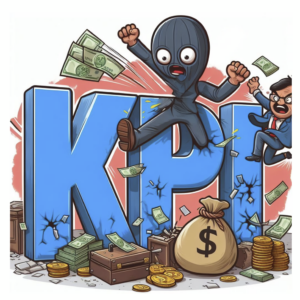Many companies follow the best practice of implementing a fraud risk management program (FRMP), but not all follow through in a way that leads to improvement over time. The Fraud Magazine article, “Measure and Monitor Your Fraud Risk Management Program Success,” encourages employers to evaluate the effectiveness of their FRMPs using a variety of key performance indicators (KPIs). In doing so, companies are able to justify the importance of their FRMPs, identify overall business improvements, and modify their programs as needed to increase success.
In the following, we will identify and summarize the categories of KPIs discussed in the article.
Measures of cost recoveries and savings:
When evaluating the effectiveness of their FRMP, it is important for companies to consider ways in which the program has improved overall business. The article states, “When it comes to making the business better, finding hidden money, cost recoveries, and dollar savings is quite often the most popular and measurable – especially when your audience is the CFO, COO, business managers and procurement professionals.” The article lists the following examples of KPIs related to these factors.
- Amount of dollars recovered from third parties via your prevention and detection activities.
- Number of fraud risk schemes identified and stopped.
- Reduced investigation and legal time and costs.
- Improved response times for investigations, employee training, reporting and remediation.
- Other ancillary benefits such as improved working capital, vendor optimization, per unit pricing comparisons, and contract compliance.
Measures of program acceptance:
When assessing the effectiveness of an FRMP, measures of program acceptance and implementation effort across an organization are beneficial. Examples of these KPIs include concrete steps taken to prevent fraud in all company operations and evidence that the program is being monitored and updated on an ongoing basis. According to the article, marketers refer to the measure of user acceptance as the net promoter score (NPS). The article states, “When developing any new fraud risk management solution, program or initiative, it’s always a good idea to ask an NPS question at the end to gauge people’s level of satisfaction at any given time, and over time, to demonstrate continuous program satisfaction by the most important group – your business customer, the end user.”
Risk avoidance and remediation:
A third category of KPIs used to assess the effectiveness of a fraud risk management program are those that measure a reduction in litigation and regulatory risks and an increase in business transparency and culture of compliance. The article provides the following examples of KPIs related to these factors:
- Increased business transparency through the use of data analytics to monitor activities around vendors, customers, and employees.
- Improved collaboration and coordination across departments through the sharing of important data and insights.
- Improved culture of compliance based on employee surveys. Improved awareness and adherence to corporate policies, as shown by fewer incidents.
- Alignment with regulatory expectations, such as the U.S. Department of Justice (DOJ), U.S. Securities and Exchange Commission (SEC), FINRA, and Serious Fraud Office (SFO).
- Reduction in fines or violations over time.
The article closes by listing the following three questions that companies should be able to answer from reflecting on the effectiveness of their FRMP:
- Is the corporation’s compliance (FRM) program well designed?
- Is the program being applied earnestly and in good faith? In other words, is the program adequately resourced and empowered to function effectively?
- Does the corporation’s compliance program work in practice?
Answering these questions allows companies to identify their programs’ strengths and weaknesses and to set goals for improvement. These goals can then be monitored using the above KPIs. The process of implementing and evaluating the effectiveness of a fraud risk management program is an ongoing cycle. Continued engagement in this process allows for continuous improvements in fraud prevention practices.
